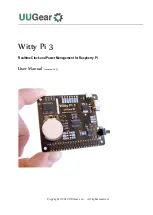
6
Suitable measures (e.g. safety valves) have to be
taken to ensure that the maximum operating
pressures and maximum and minimum operating
temperatures are not exceeded or undercut.
Hot surfaces!
Risk of injury!
Do not touch without safety gloves.
The valve may get very hot during operation.
Sharp edges!
Risk of injury!
Only touch with safety gloves.
Threads, bore holes and edges are sharp.
3 Transport, storage and
packaging
3.1 Transport inspection
Upon receipt check delivery for any damages caused
during transit.
Any damage must be reported immediately upon
receipt.
3.2 Storage
The valve must only be stored under the following
conditions:
– Do not store in open air, keep dry and free from
dust.
– Do not expose to aggressive fluids or heat sources.
– Protect from direct sunlight and mechanical
agitation.
– Storage temperature: –20 °C up to +60 °C
– Max. relative humidity of air: 95 %
3.3 Packaging
Packaging material is to be disposed of environmen-
tally friendly.
4 Technical data
4.1 Performance data
Operating temperature t
s
:
2 °C to 120 °C
(for short periods up to
130°C)
Max. operating pressure p
s
: 10 bar
Fluid:
Water and suitable water
and glycol mixtures
according to
VDI 2035 (max. 50%).
Not suitable for steam,
oily and aggressive fluids.
Recommended differential
pressure control range:
30 up to 200 mbar
Max. differential pressure:
1 bar
Dimension according
to EN 215:
Series D (“AV9”, “ADV9”,
“CV9”), Series F (“RFV9”)
The thermostatic valves may also be combined with
electric actuators (except for valves “ADV9”). See
Oventrop catalogue “Products”.
The observance of the installation and operating
instructions is part of the compliance terms.
2.2 Possible dangers at the installation location
and during transport
The case of an external fire has not been taken into
consideration when constructing the thermostatic
valve.
5 Function
5.1 Functional description
Together with the mounted thermostat, the valve
constitutes an automatic temperature controller.
The thermostatic valves “AV9, ADV9, RFV9, CV9” are
fitted with an infinitely adjustable valve insert and allow
a trouble-free, exact adaptation of the flow rates to
the required heat demand as well as hydronic
balancing of the system.
A constant warming up of all radiators in a heating
system is thus guaranteed.
The valve “ADV9” additionally features a double
function which provokes an automatic closing of the
valve to 5% of the nominal flow (frost protection)
should the thermostat be removed or destroyed
(vandalism).
Note
To avoid increased differential pressures at the
thermostatic valves and disturbing flow noises, we
recommend the installation of automatic differential
pressure regulators or controlled circulation pumps in
the central supply risers.
6 Installation and initial
operation
The pipework has to be flushed thoroughly before
installing the valve.
It must be observed that the direction of flow has
to conform to the direction of the arrow on the
valve body (valve “CV9” see indication on the
individual packaging).
6.1 Installation of the valve
The radiator valve should be installed so that the
thermostat is in a horizontal position and a good
circulation of air is guaranteed. If this is not possible,
a thermostat with remote sensor or with remote
control should be used. It is most important that
capillaries are not kinked or flattened.
The radiator valve is installed in the supply pipe to
the radiator, with the flow in the direction of the
arrow.
6.1.1 Pipework installation for standardized metal
and plastic pipes
Oventrop offers connection elements for different
types of connection (e.g. screwed connection) of
standardized copper, stainless steel, precision
steel and plastic pipes to the thermostatic valves
(accessories, see catalogue “Connection system
Ofix”).
Threaded steel pipes are directly mounted onto the
thermostatic valves.
DANGER
!
WARNING
!






























